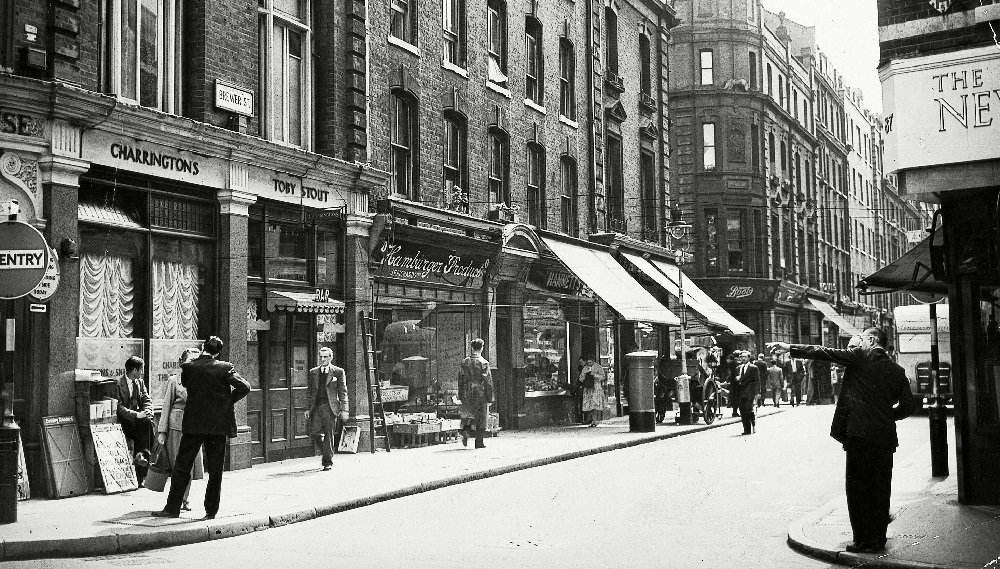This is what it was like to go to gay clubs when homosexuality was still illegal in Britain
By Will Stroude

This article was first published in Attitude issue 285, July 2017
.
When I came down to London from Yorkshire as a student in the mid-1950s, there was no easy way to find out about gay life. It was only when I read one of Peter Wildeblood’s books and noticed a mention of Speakers’ Corner that I discovered my first trolling ground in Hyde Park. At first I was very nervous going there, but I soon discovered the pleasures of mixing in the closely packed crowds milling round the speakers.
I was very naïve and had no way of finding gay clubs, to which you needed a member’s introduction — until I got a room in a house where it turned out that there was another gay man, Anthony, with whom I became increasingly friendly. He took me to two clubs he used: the Rockingham, which was behind Shaftesbury Avenue, and the A&B, close to Wardour Street in Soho. Going with a close friend meant it was not something to worry about unduly, and I never felt at risk there from the police or otherwise.
While it was intriguing to be in a crowd of gay men in a primarily social setting for the first time, the members of those clubs all seemed upper-class and weren’t welcoming to new faces. I didn’t find talking to them easy. In those days, clubs had to appear very respectable: there was no dancing or even touching.
The Rockingham, with its posh striped wallpaper, struck me as decidedly pisselegant, and the people there as stuck up. On reflection, they were perhaps just being cautious and sticking to people they already knew, and saw me as shy. Anyway, I never got to know any of them and I didn’t go to those clubs very often.

My new friend also took me to my first gay pub: the King William IV, in Hampstead. That was more agreeable than the clubs, and I soon made a range of friends and started joining the crowd who moved on to the Spartan club in Tachbrook Street in Victoria when the William closed on Sunday afternoons. The Spartan was a very friendly and relaxed place, though it was probably the only gay club with a club tie!
In any case, I was already in a crowd of people I knew when I went there. Overall, I was never excessively apprehensive about police raids; but in the 1960s you quickly learned to take what were then simply sensible routine precautions, such as never keeping address books with a record of gay contacts or writing love letters to your partners.

Anthony and I soon became a couple, and eventually found a flat together although that was surprisingly difficult for two men to do. It wasn’t a case of “love at first sight,” and we were as much linked by common interests in politics and history as by sexual attraction. That made possible the relaxed and open relationship which was the cornerstone of our lives until Anthony died 50 years later.
Another club Anthony and I used was Le Duce in Poland Street. It was a coffee bar, and not exclusively gay, but same-sex dancing was allowed, and we frequently stayed there until 3am. Later on, I discovered there were gay contact ads, albeit very discreetly worded ones, of course, in papers such as The Sunday Times and magazines such as Films and Filming and Music and Musicians.

We lived in a very different society then. Finding one’s way into and around the gay world at first was very difficult, and depended largely on luck. Once you met the right people, you could meet others; but it took me years after coming to London to do that. The Sexual Offences Act 1967 made it possible for gay communities to develop: only after that could we be open without thereby declaring ourselves to be criminals.
The Act was only a first step — but it was a vital one. Without it we could not have taken any others.
The September issue of Attitude is out now. Buy in print, subscribe or download.

More stories:
Manchester Pride 2017: Everything you need to know
Aussie actor Ryan Cooper goes full-frontal in Scarlett Johansson comedy Rough Night
